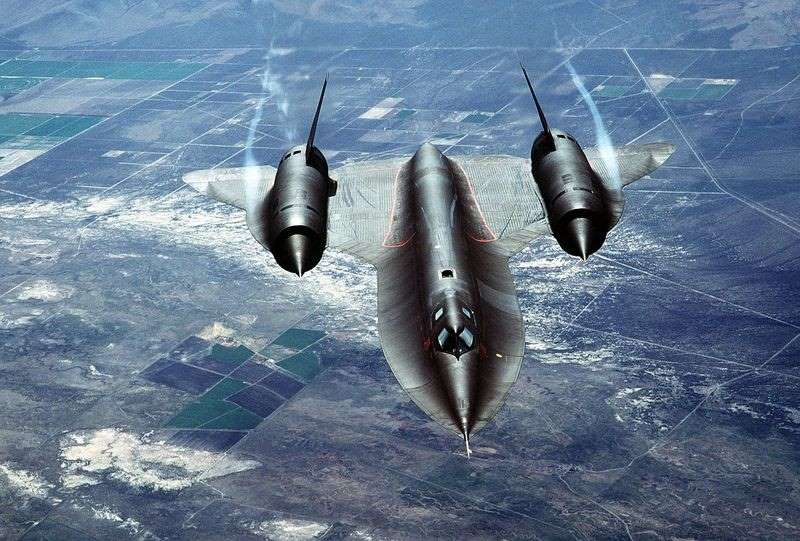May 26, 2017
In the future, military dominance will depend partly on how fast you can fly and how quickly you can get into space. That’s one of the guiding principles behind an advanced Pentagon project to build a spacecraft able to launch smaller payloads into low-earth orbit on short notice, and at lower cost.

May 26, 2017
In the future, military dominance will depend partly on how fast you can fly and how quickly you can get into space. That’s one of the guiding principles behind an advanced Pentagon project to build a spacecraft able to launch smaller payloads into low-earth orbit on short notice, and at lower cost.

A U.S. Air Force SR-71A Blackbird© USAF/Getty Images
Boeing Co.’s XS-1 (Experimental Spaceplane), which the company dubs “Phantom Express,” got a green light this week by the Defense Advanced Research Projects Agency, or DARPA. The XS-1 is designed to quickly lift satellites as heavy as 3,000 pounds into orbit for $5 million or less, launching from the ground, deploying a small upper-stage module, and then landing like a traditional airplane—the key to reuse and lower operating expense. DARPA also has a separate program aimed at launching 100-pound satellites for less than $1 million per launch, using conventional aircraft.
“The XS-1 would be neither a traditional airplane nor a conventional launch vehicle but rather a combination of the two, with the goal of lowering launch costs by a factor of ten and replacing today’s frustratingly long wait time with launch on demand,” Jess Spoonable, a DARPA program manager, said in a May 24 statement.
“When most people think about hypersonic aircraft, many believe they would have to be large, expensive and exotic.”
The Phantom Express will be powered with an Aerojet Rocketdyne Holdings Inc. AR-22 engine, a newer version of the main engine trio that served on NASA’s Space Shuttle. Boeing will design and build the aircraft through 2019, including 10 engine ground firings over 10 days, followed by 12-15 flight tests in 2020. A Boeing spokeswoman declined to comment on the project’s cost.
Beyond the military’s desire for a spaceplane, such a craft would likely carry immense appeal to commercial firms, many of which are planning to launch constellations of small satellites. These companies don’t need the weight capability, or large expense, associated with traditional payload launches sold by United Launch Alliance, the Boeing-Lockheed Martin Corp. joint venture, Arianespace, or Elon Musk’s SpaceX.
The XS-1 is also envisioned as a means to further engineering work on advanced airframe designs capable of hypersonic flight, generally five to 10 times above Mach 1, the speed of sound at sea level (approximately 767 miles-per-hour). Historically, these designs have been challenged due to the intense friction and heat generated by higher Mach speeds.
Beyond a quick pop into space, a craft with hypersonic speed offers the Pentagon a new capability—an aircraft deployable anywhere in the world in less than three hours. “When most people think about hypersonic aircraft, many believe they would have to be large, expensive and exotic,” Lockheed Martin says. “It’s time we change that perception.”
One way the defense contractor is trying to do that is with the next-generation of the SR-71 Blackbird, the Cold War-era speed demon able to fly at Mach 3, which provided critical reconnaissance for the Air Force until the late 1990s, when it was retired. The SR-71 still holds numerous speed and altitude records.
The new Lockheed Skunk Works project, called the SR-72, is a proposal envisioning an unmanned aircraft that cruises at Mach 6—roughly twice as fast as the 2,300-mile-per hour SR-71—meaning “an adversary would have no time to react or hide,” Lockheed Martin says in its promotional materials. A Skunk Works spokeswoman declined to comment on hypersonic projects.
The SR-72 could be operational by 2030, for less than $1 billion, according to the company, which has been touting the aircraft for several years.
Boeing has previously experimented with hypersonic flight with its X-51 WaveRider, a small scramjet platform, dropped from a B-52 bomber, which flew its last test mission in 2013 over the Pacific. The X-51 topped Mach 5, or about 4,000 mph. In the 1960s, NASA experimented with the manned X-15, a high-altitude, hypersonic flight program to inform future space missions. In 1967, the X-15 achieved a record Mach 6.7 (4,520 mph) at more than 102,000 feet.
Courtesy: Bloomberg
















































































































